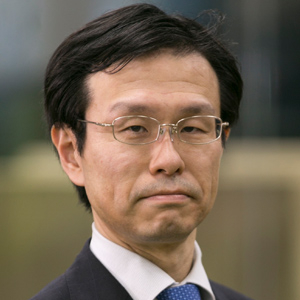
From Wise Spending to Outcome-Oriented Spending
July 12, 2022
R-2022-011E
The concept of wise spending has been touted in documents guiding Japan’s fiscal policy for quite some time, but it has done little to rein in Japan’s massive public debt. The time has come, argues Takero Doi, to update this notion so that fiscal outlays actually lead to intended outcomes.
* * *
There are ever-growing demands for increased fiscal spending to not only meet the burgeoning social security needs of an aging population but also address such social priorities as developing badly needed human resources, advancing digital transformation, and mitigating climate change.
Such pressures for fiscal expansion have been exacerbated by Russia’s invasion of Ukraine, which has coincided with the scheduled revision of three key security documents—namely, the National Security Strategy, the National Defense Program Guidelines, and the Medium Term Defense Program, which are revised every 5 to 10 years. The sudden surge in security concerns has led to calls to raise Japan’s defense budget over the medium to long term to about 2% of GDP, in line with the target among the member countries of the North Atlantic Treaty Organization (NATO).
Government outlays are thus likely to rise not only for social security but also in meeting new challenges in a post-COVID-19 world and boosting the country’s defenses.
Setting Fiscal Priorities
But are such increases sustainable? They may be, if the public were ready to take on the increased burden that such expenditures would require and if new taxes and other revenue sources were made part of any plans for increased public spending. Unfortunately, there exists no consensus at the moment for any additional taxes.
The only alternative, then, would be to look over the entire spectrum of Japan’s annual public expenditures, prioritize each item, and selectively choose those on which to focus the nation’s fiscal resources. This is the thinking behind the idea of “wise spending”—a term that has appeared for seven consecutive years since 2015 in the government’s Basic Policies for Economic and Fiscal Management and Reform. Inasmuch as these so-called honebuto policies are approved by the cabinet, the government obviously attaches great importance to this notion .
The Basic Policy issued in June 2021, for example, states that reform of government expenditures includes “thorough implementation of the Wise Spending and prioritized allocation of budgets to the four driving forces of growth.” Reference was made a year earlier to thorough implementation of “wise spending by strengthening the evidence-based policymaking (EBPM) structures, budget prioritization, and the connection between the multiple-year-measures and budget formulation process.”
The 2019 document says, “the government will further strengthen wise spending, improve productivity, strategically prioritize to develop projects to ensure prosperous life, and pass on high quality assets to the next generation,” while the 2018 policies promise to “further enhance wise spending.”
The 2017 honebuto policy notes, “The government will further improve the quality of budget by strengthening framework for wise spending to severely reduce expenditures having a low effect and allocate them to more effective measures.” Mention is made the preceding year to the importance of strengthening “the wise spending mechanism to severely reduce expenditures having a minimal effect and allocate them to more effective measures” in order to “improve the quality of fiscal administration and to address present problems,” adding that “wise spending by national and local governments will be promoted to realize more efficient resource allocation.”
And the 2015 policy statement says, “The government will work to achieve quality improvements to public finances, based on the idea that investment in human resources for the next generation will result in continual creation of wealth. It will make expenditures wisely and with on the goal of both long-lasting growth and addressing current issues; it will use a focused strategy to address relevant issues.”
Does Wise Spending Need an Update?
The term “wise spending” gained currency in Japan after then Economic and Fiscal Policy Minister Kaoru Yosano used it to describe the economic measures needed in the wake of the global financial crisis around 2008. (I chronicle these and other events in my book Heisei no keizai seisaku wa do kimerareta ka [Economic Policymaking during the Heisei Era]). The notion has therefore been a key concept in Japan’s fiscal policymaking for quite some time now.
Has it led, though, to the kind of changes envisioned by these documents? The public, I would guess, has little real sense of government spending haven gotten any wiser, and the phrase appears to be losing meaning with each passing year. Even if wise spending is becoming little more than a cliché, the need to identify fiscal priorities, improve the quality of government spending, and enhance policy outcomes is as urgent as ever. A term that would better fit our needs today may be “outcome-oriented spending.”
This concept was included in a proposal made on May 25 by the Fiscal System Council, an advisory panel to the minister of finance,[1] and refers to allocating public funds to those items that have been assessed to have positive outcomes. Until now, once budget allocations are made, little effort had been made to examine whether they actually produced the intended results—an approach that can hardly be expected to lead to “wise spending.”
What is needed is to first clearly identify the desired outcome and commit to achieving such a goal. Fiscal resources can then be deployed in a manner that can generate better outcomes. Assessments should be made to determine whether the expenditure was truly effective, and the findings fed back into the PDCA (plan-do-check-act) cycle—utilizing EBPM methods to verify the extent to which public funds helped generate intended outcomes.
The affinity outcome-oriented spending has with the PDCA cycle and EBPM is an advantage that should be tapped henceforth to further enhance the effectiveness of Japan’s fiscal expenditures.
[1] The author was likely the first to introduce the concept to the council during a subcommittee meeting on April 8, 2022.

